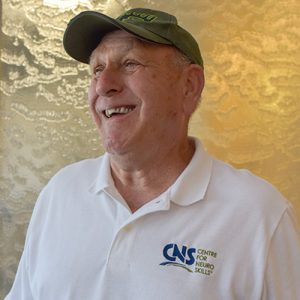 When a stroke patient returns to work, it’s a celebration for all who played a role in their rehabilitation. In the case of Paul Carroll, a CNS maintenance department employee in Bakersfield for 17 years, it’s a profound full circle. His journey from employee to patient to employee again began on St. Patrick’s Day 2016. He’d suffered a headache for a few days, and the day before St. Patrick’s Day he completed a full day’s work in the maintenance department, went home and ate dinner, but had problems with swallowing, dizziness, and speech.
When a stroke patient returns to work, it’s a celebration for all who played a role in their rehabilitation. In the case of Paul Carroll, a CNS maintenance department employee in Bakersfield for 17 years, it’s a profound full circle. His journey from employee to patient to employee again began on St. Patrick’s Day 2016. He’d suffered a headache for a few days, and the day before St. Patrick’s Day he completed a full day’s work in the maintenance department, went home and ate dinner, but had problems with swallowing, dizziness, and speech.
He was diagnosed with a stroke that night at a local hospital. The following day Paul was visited by Dr. Mark Ashley, CNS CEO and President; Dr. Matthew Ashley, CNS Consulting Neurologist; and James Knowles, Maintenance Supervisor. “We’ll take care of you,” Mark Ashley said to Paul. “As soon as you’re discharged we’ll get you into CNS.”
And so began an unusual role change for Paul. He was now a patient in his workplace. “This was a whole new perspective,” he recalled. At first Paul used a walker, couldn’t swallow or speak and used a G-tube for feeding. In his four months here he experienced the intensity of CNS’ rehabilitation with six hours of daily physical, speech, and cognitive therapy.
Like many patients, his milestones were monumental. After two months, Paul could walk with a cane. After three months he walked normally again. He also made significant improvement in math and other studies. Counseling, he said, was remarkable. “They make sure your attitude is right,” he emphasized.
His wife, Indriani, was welcomed and supported by all staff, who made her feel at home. They both got to know all the patients that Paul had seen for months in the clinic, befriended their families, and joined them in counseling. “I never feared that I wouldn’t work again,” he reflected. In true CNS fashion, therapists had him practice maintenance tasks based on strength and ability to support his return to work.
“CNS was a life saver,” Paul said. “The faster you get into rehab the better. For me it was instant - bam - I was here at 9 a.m. like I was going to work, but instead I was in recovery. It surprised the patients to see me in therapy.”
CNS is a big family, he noted, and it helped him to overcome his adversities, get back to full time work and a normal life, and understand why patients do so well here.
“I’m lucky,” he said of his rehabilitation experience. “There’s a little Irish in me, I guess.”
CNS Monthly Newsletter
The latest CNS updates, including events, company information, and patient care developments
The Inside View
Quarterly magazine focused on brain injury research, rehabilitation, and advancements shaping the field
Sign-up for one or both to stay connected with brain injury news and recover